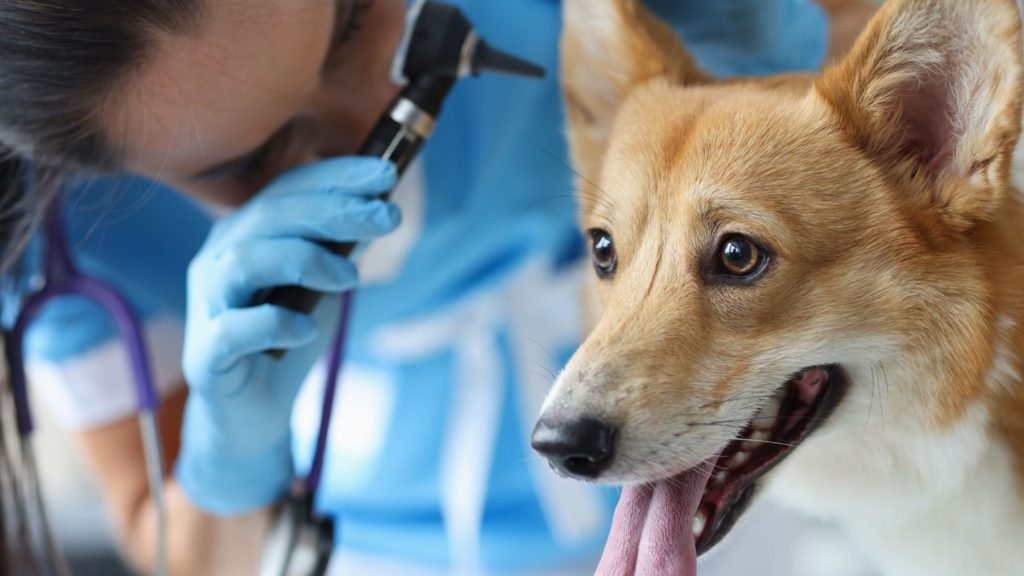Leishmaniasis in dogs is a tropical disease caused by parasites of the Leishmania genus. The condition is transmitted through the bite of infected sandflies and can affect humans and animals, including dogs. Pet owners must understand Leishmaniasis and how to protect their dogs from this severe disease. This blog post will explore the causes, symptoms, diagnosis, treatment, and prevention of Leishmaniasis in dogs.
Causes of Leishmaniasis in dogs
The bite of infected sandflies transmits Leishmaniasis. Dogs exposed to sand flies in disease-endemic regions are susceptible to illness. Because of their genetic composition, some dog breeds may be more sensitive to Leishmaniasis.
Symptoms of Leishmaniasis in dogs
Symptoms of Leishmaniasis in dogs can include skin lesions, weight loss, anemia, fever, and swelling of the spleen and liver. These symptoms may not appear immediately and may take months or even years to develop. It’s essential to watch for any changes in your dog’s health and to seek medical attention if you notice any unusual symptoms.
- All
“The Importance of Dogs Balanced Obedience Training: Striking the Right Balance Between Discipline and Love”
A dogs balanced obedience training is a essential step to being a Read More
10 foods dogs should not eat: Don’t put in risk your dog’s health
10 Foods Dogs Should Not Eat: Discover the top 10 dangerous and Read More
10 Interesting Facts About Chinese Water Dragons
The Chinese Water Dragon, a mystical creature that has captivated people’s imagination Read More
Diagnosis and treatment of Leishmaniasis in dogs
Leishmaniasis is typically diagnosed through blood tests and biopsy, which involves taking a sample of infected tissue for laboratory analysis. Treatment options for Leishmaniasis in dogs may include medications such as antiparasitic drugs and immune modulators, as well as surgery to remove infected tissue. It’s essential to follow the treatment plan prescribed by your veterinarian to ensure the best possible outcome.
leishmaniasis in dog's ears
Leishmaniasis can affect dogs’ ears, causing various symptoms, including swelling, redness, and discharge. The severity of these symptoms may vary depending on the specific form of Leishmaniasis and the dog’s overall health.
If you suspect your dog may have Leishmaniasis in the ears, it’s essential to seek medical attention as soon as possible. Leishmaniasis is a severe disease that can be life-threatening if left untreated. Your veterinarian can diagnose the condition and recommend the appropriate treatment plan.
Prevention of Leishmaniasis in dogs
You can take several measures to help prevent Leishmaniasis in your dog. These include protecting against sand fly bites, using insect repellents, and controlling sand fly populations. Wearing long-sleeved clothing and using insect repellents can help reduce the risk of sand fly bites. Eliminating standing water and other moisture sources can help control sand fly populations.
Products that may help protect against Leishmaniasis in dogs include:
- Insect repellents: There are a variety of insect repellents available for dogs, including sprays, collars, and topical products. Choose a product appropriate for your dog’s age and health status and follow the label instructions carefully.
- Mosquito nets: Sand flies can be kept at bay by placing mosquito nets over windows or doors. The nets also provide screened-in sleeping space for your dog.
- Long-sleeved clothing: Wearing a long-sleeved dress will help keep sand fly bites at bay. That is especially critical if you spend much time outside in Leishmaniasis-endemic areas.
- Insecticides: Killing sand flies and their larvae using pesticides can help control their populations and lower the risk of illness. Make sure you use a pet-safe product and carefully follow the package recommendations.
Leishmaniasis is a highly severe illness affecting people and animals, including dogs. You can protect your dog from this painful condition by studying its origins, symptoms, and preventative strategies. If you believe your dog has Leishmaniasis, get medical assistance as soon as possible to guarantee the best outcome. You can help keep your dog healthy and safe in regions where Leishmaniasis is widespread by taking the necessary precautions and raising awareness.
FAQ About Leishmaniasis in dogs
What is Leishmaniasis in dogs?
Leishmania causes dog leishmaniasis. Infected sand flies spread it, causing skin lesions, weight loss, and lameness.
What are the symptoms of Leishmaniasis in dogs?
Leishmaniasis in dogs can cause skin lesions, weight loss, lameness, lethargy, and decreased appetite. The condition can harm the kidneys and liver and potentially kill them.
How is Leishmaniasis diagnosed in dogs?
Clinical symptoms, blood testing, and tissue biopsies diagnose dog leishmaniasis. PCR tests can also confirm parasite presence.
How is Leishmaniasis treated in dogs?
Depending on the severity, Leishmaniasis in dogs is treated with parasite-killing drugs, immune system boosters, and supportive care.
Is there a cure for Leishmaniasis in dogs?
Medication and supportive care help control dog leishmaniasis, which has no cure. Leishmaniasis-infected dogs can enjoy long, healthy lives with therapy.
Can Leishmaniasis be prevented in dogs?
Infected sand flies spread Leishmaniasis, making dog prevention difficult. Avoiding sandfly-infested locations, applying insect repellent, and removing sandflies can lower the chance of infection.
Can Leishmaniasis be transmitted from dogs to humans?
Dog-to-human Leishmaniasis is rare. To prevent transmission, wear gloves, and safety gear when working with a dog with Leishmaniasis.




